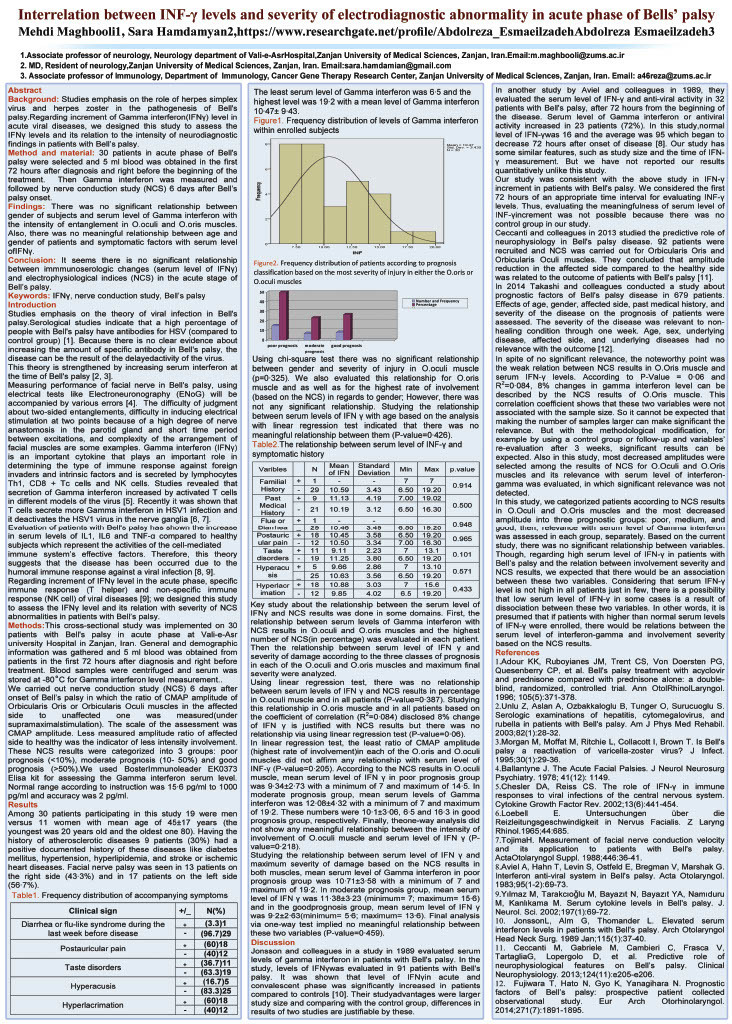Interrelation between INF-γ levels and severity of electrodiagnostic abnormality in acute phase of Bell’s palsy
Abstract
Background:
Bell's palsy is the most common cause of peripheral facial palsy. Studies emphasis on the role of herpes simplex virus and herpes zoster in the pathogenesis of this disease. Gamma interferon plays an important role in determining the type of immune response against foreign invaders and intrinsic factors. Regarding increment of IFNγ level in acute viral diseases, we designed this study to assess the IFNγ levels and its relation to the intensity of electroneurodiagnostic findings in patients with Bell’s palsy.
Method and material:
30 patients in acute phase of Bell's palsy were selected and 5 ml blood was obtained in the first 72 hours after diagnosis and right before the beginning of the treatment. Then Gamma interferon was measured and followed by nerve conduction study (NCS) 6 days after Bell’s palsy onset.
Findings:
There was no significant relationship between gender of subjects and serum level of Gamma interferon with the intensity of entanglement in O.oculi and O.oris muscles. Also, there was no meaningful relationship between age and gender of patients and symptomatic factors with serum level of IFNγ.
Conclusion:
It seems there is no significant relationship between immmunoserologic changes (serum level of IFNγ) and electrophysiological indices (NCS) in the acute stage of Bell’s palsy.

